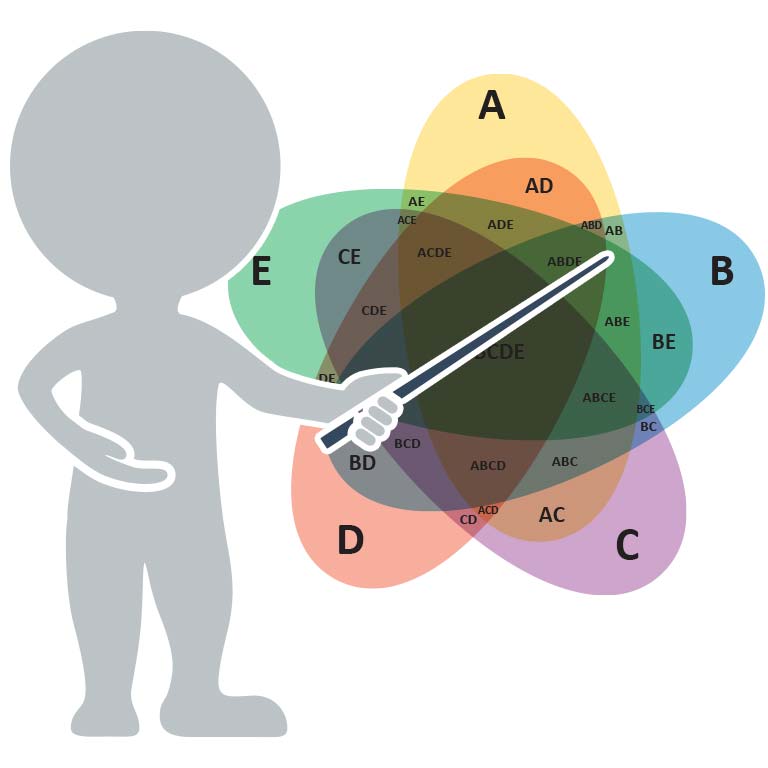The Orchestra 990 Database Project is done and although there was passionate support from a diverse group of backers, the project failed to meet its funding goal. But thanks to the way the campaign was designed, that’s not a bad thing; in fact, it’s a great thing. Let me share what you can accomplish by embracing failure.
 Ever since the earliest stages of designing the campaign, the entire process has been as much an experiment in the methods of crowd sourced fundraising as it was about meeting the actual funding goal.
Ever since the earliest stages of designing the campaign, the entire process has been as much an experiment in the methods of crowd sourced fundraising as it was about meeting the actual funding goal.
Consequently, the puzzle that needed solving centered on how to derive as much benefit from failure as success (which in this case was defined by reaching the fundraising goal) without asking backers to absorb risk by paying into a project that may fall short of the minimum funding goal. Kickstarter was an excellent vehicle thanks to its policy of only charging backers if the project reaches its stated fundraising goal.
Thanks to that vital policy, we were free to explore these options without betraying our backer’s faith and long story short, it became clear that the key to defining value in failure meant obtaining knowledge that was previously unknown.
To that end, the project needed to be 100 percent crowd sourced. Instead of gearing the project toward one or more usual suspects likely to benefit from a searchable database of orchestra 990s, it made better sense to promote it as a universal tool for all stakeholders, allowing them to self-identify which aspects provided greatest value.
This meant no approaching any large single benefactors or foundations for seed donations; likewise, no approaching organizations that would obviously be useful for generating interest such as service organizations or the American Federation of Musicians and its player conferences.
Simply put, the parallel goal became seeing how much support could be generated entirely by word of mouth, in both pledges and social sharing, for a niche project with this sort of price tag.
The results were fascinating and entirely useful in that I’m unaware of any other efforts in the field focused on launching a Kickstarer campaign with the goal of uncovering this sort of data.
Top 10 Observations & Discoveries
Here are some of the most useful points you can use to help shape a Kickstarter campaign for you or your organization.
- Rewards didn’t have as much impact on giving as they do for typical Kickstarter projects.
Kickstarter makes it clear that rewards help generate pledges and you can find a wealth of information and research data on the topic via some straightforward Google searches. But as it turns out, 26 percent of backers pledging at levels high enough to select a reward opted for no reward. It just so happens that these backers accounted for 26 percent of pledges so it seems that altruism played a much greater role here than the traditional Kickstarter project.
- Facebook referrals generated the most dollars.
Social sharing clearly had a substantial impact and pledges that came in from a Facebook referral generated 32 percent of pledges.
- The promotional video is every bit as important as Kickstarter stresses.
One item Kickstarter drills into creators is making a video capable of effectively communicating and educating your project’s goal. And over the course of 45 days, the video was played 2,205 times and just under 50 percent of those watched from beginning to end.
- The giving sweet spot was $25.
For a fully crowd sourced project of this nature, nearly 30 percent of all pledges were $25 while $100 and $50 pledges came in second and third, respectively, and generated another 30 percent of all giving.
- Eleventh hour giving rocks.
One third of all backers were generated during the last 72 hours and they generated nearly one quarter of all funds pledged. During that period, the frequency of posts about giving at Adaptistration, Facebook, and Twitter not only increased but focused on the impending deadline and those efforts certainly generated positive results so be prepared to allocate the proper amount of time toward the end of the project to focus on increased efforts.
- Men were a bit more likely to give than women and therefore generated more overall pledges BUT women were more generous.
Although men comprised 60 percent of all backers and generated 57 percent of all pledges, the average pledge from women was 17 percent higher.
- Stakeholder interest was nothing if not diverse.
If you thought any one stakeholder group might be more inclined to become a backer over another, think again. Breaking the division into musicians, managers (which included board members), and other; musicians comprised 35 percent, managers comprised 25 percent, and other comprised 40 percent. Of all the results, this was one of the most heartening as it quantifies that institutional transparency has a meaningful place in how orchestras create meaningful relationships with their community and supporters.
- Don’t underestimate the value of those involved.
Even though Facebook generated the most dollars, the largest number of pledges came from Adaptistration.com referrals. Private notes came in from some backers saying my participation and its potential for positive impact influenced their decision as much as the project’s mission. The lesson here is a good idea may not be enough on its own.
- Kickstarter’s internal culture is not something to overlook.
A full 15 percent of pledges came from internal Kickstarter referrals and even though this isn’t the lion’s share, it is certainly more than enough to make the difference between reaching and missing a fundraising goal! Consequently, it pays to craft your project description and categorization to attract those internal referrals.
- Scam artists abound.
You can expect to get inundated with offers to promote your project for some outrageous fee. On average, I received two offers a day via my direct email from these fly-by-night scammers and more than two dozen via direct Kickstarter contact or Twitter DM. By all means, do take the time to report them as spam in both Kickstarter and Twitter; doing so definitely cut down on the quantity and frequency of messages.
You Can Expect A Relaunch In The Fall
Rest assured, the project will be launched again in the fall but this time around, we’ll leverage the data from this effort along with pursuing the resources we intentionally bypassed this time around. In short, the goal will be hyper focused on meeting the fundraising goal.
Between now and then, I want to express my heartfelt thanks to everyone that made a pledge, your support was more than enough to inspire a subsequent attempt!



I did get bundled in the “Managers” segment?
A few backers were twofers 🙂